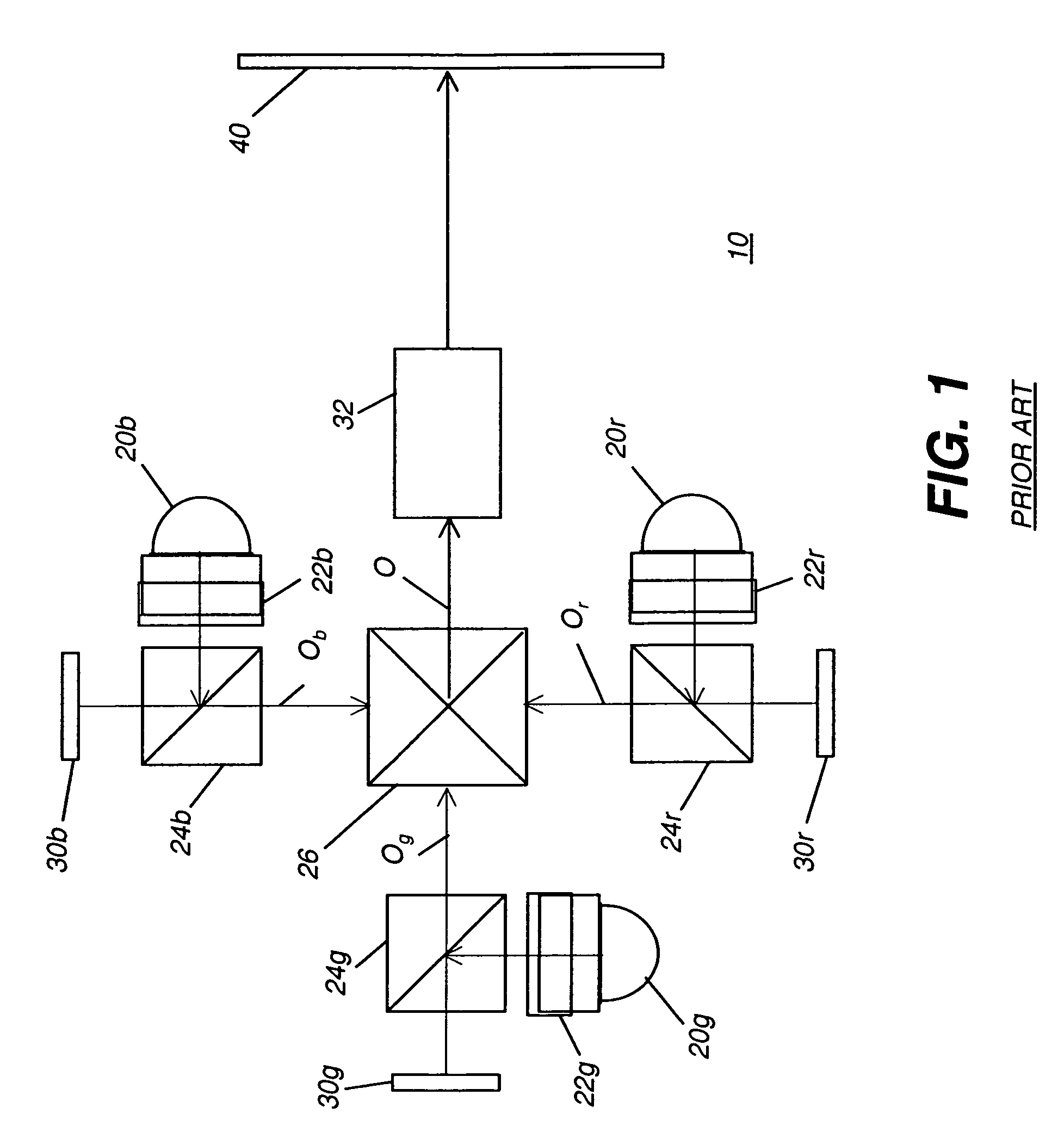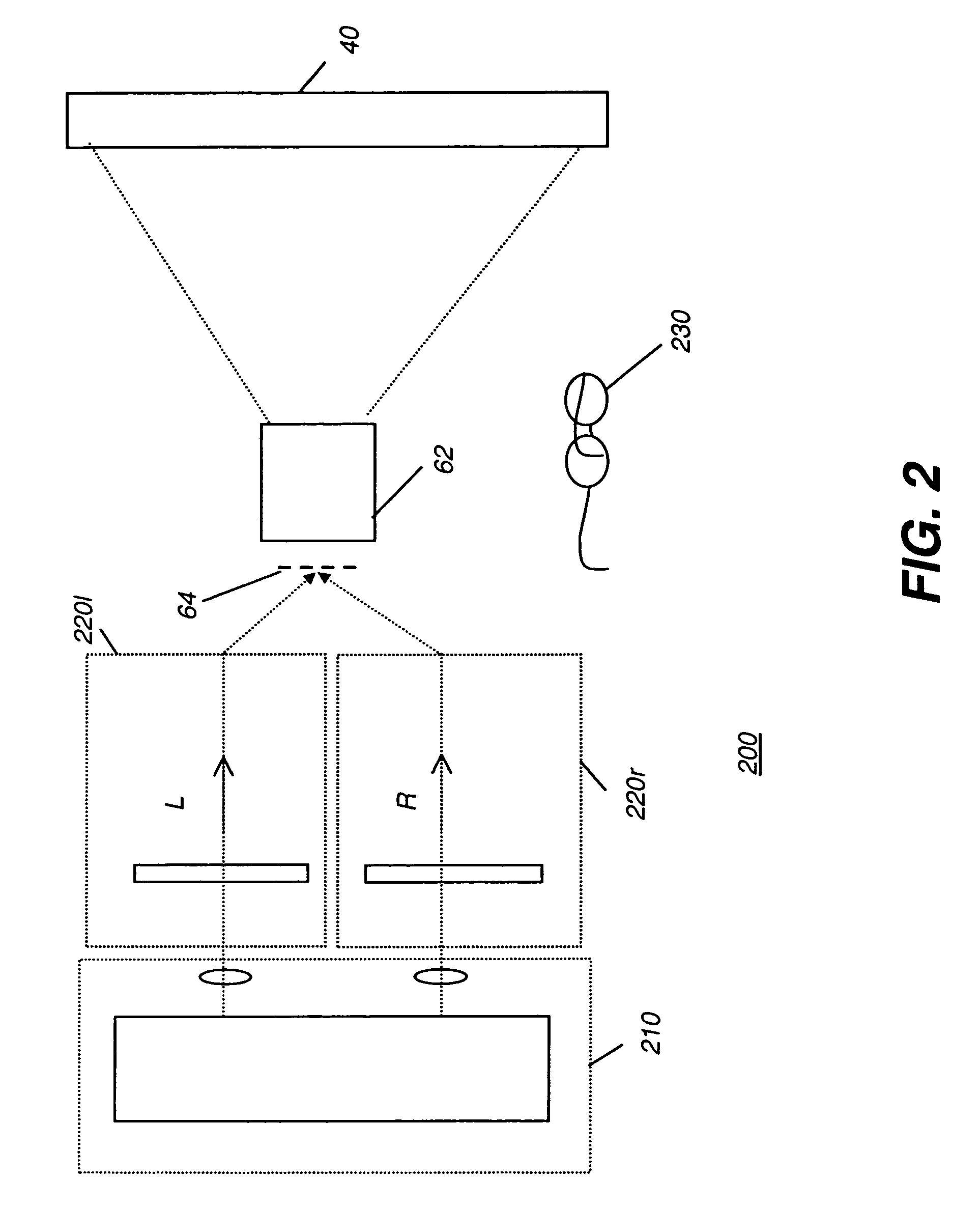Stereoscopic display apparatus using LCD panel
a technology of lcd panel and stereoscopic display, applied in the field of electronic projection, can solve the problems of brightness and efficiency, added complexity and cost, and requirement to handle illumination, and achieve the effect of adding brightness
- Summary
- Abstract
- Description
- Claims
- Application Information
AI Technical Summary
Benefits of technology
Problems solved by technology
Method used
Image
Examples
Embodiment Construction
[0053]The present description is directed in particular to elements forming part of, or cooperating more directly with, apparatus in accordance with the invention. It is to be understood that elements not specifically shown or described may take various forms well known to those skilled in the art.
[0054]The present invention adapts one or more TFT LC devices for use in stereoscopic projection. The major components of a stereoscopic imaging apparatus 200 are shown in the block diagram of FIG. 2. An illumination source 210 splits light, according to a characteristic property such as polarization or spectral content, into two channels, a left channel and a right channel. Each channel is provided for modulation: the left channel to a modulation apparatus 220l and the right channel to a modulation apparatus 220r. Modulation apparatus 220l and 220r operate to form an image 64, such as an intermediate image as shown in FIG. 2, that is projected onto display surface 40 by a projection lens ...
PUM
 Login to View More
Login to View More Abstract
Description
Claims
Application Information
 Login to View More
Login to View More - R&D
- Intellectual Property
- Life Sciences
- Materials
- Tech Scout
- Unparalleled Data Quality
- Higher Quality Content
- 60% Fewer Hallucinations
Browse by: Latest US Patents, China's latest patents, Technical Efficacy Thesaurus, Application Domain, Technology Topic, Popular Technical Reports.
© 2025 PatSnap. All rights reserved.Legal|Privacy policy|Modern Slavery Act Transparency Statement|Sitemap|About US| Contact US: help@patsnap.com



